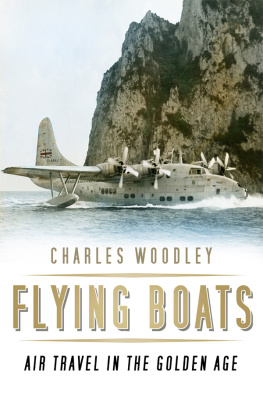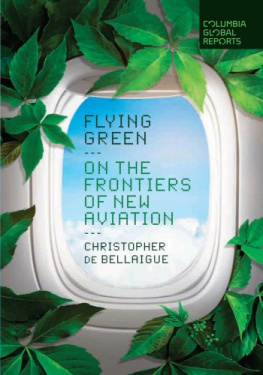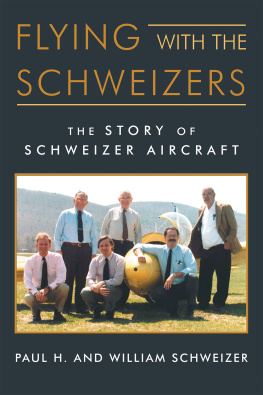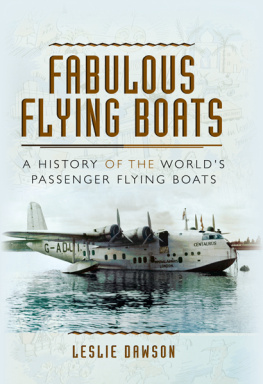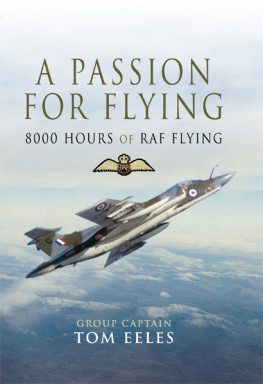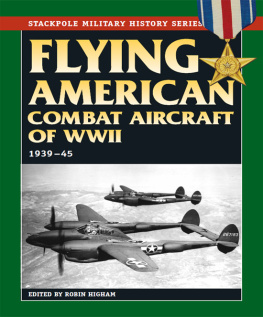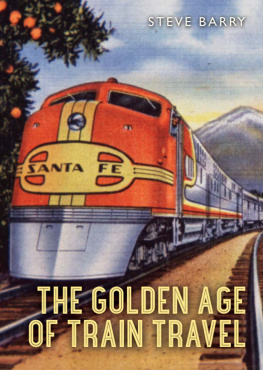Contents
Guide


Front Cover: Aquila Airways Short Solent G-ANAJ City of Funchal taxies past steep cliffs during the inaugural flight to Capri in 1954. (via Dave Thaxter)
Back Cover:Top and Middle: Qantas posters promoting the airlines UKAustralia Empire flying-boat services. (Qantas Heritage Collection)
Bottom: An Aquila Airways luggage label. (Dave Thaxter)
First published 2018
The History Press
The Mill, Brimscombe Port
Stroud, Gloucestershire, GL5 2QG
www.thehistorypress.co.uk
Charles Woodley, 2018
The right of Charles Woodley to be identified as the Author of this work has been asserted in accordance with the Copyright, Designs and Patents Act 1988.
All rights reserved. No part of this book may be reprinted or reproduced or utilised in any form or by any electronic, mechanical or other means, now known or hereafter invented, including photocopying and recording, or in any information storage or retrieval system, without the permission in writing from the Publishers.
British Library Cataloguing in Publication Data.
A catalogue record for this book is available from the British Library.
ISBN 978 0 7509 7014 3
Typesetting and origination by The History Press
Printed and bound in Great Britain by TJ International Ltd
CONTENTS
AUTHORS NOTE
Throughout this book I have used the place names in use during the period covered. Many of them have changed in the intervening years and their modern-day versions are as follows:
Belgian Congo | now Democratic Republic of Congo |
Calcutta | now Kolkata |
Canton Island | now Kanton, part of Kiribati |
French Equatorial Africa | now several independent countries under the name of Union of Central African Republics |
Jiwani | was in India, now in Pakistan |
Karachi | was in India, now in Pakistan |
Malakal | was in Sudan, now in South Sudan |
Malaya | now Malaysia |
Northern Rhodesia | now Zambia |
Nyasaland | now Malawi |
Rangoon | now Yangon, in Burma/Myanmar |
Salisbury | was in Rhodesia, now Harare in Zimbabwe |
Sumatra | was in Dutch East Indies, now in East Java province of Indonesia |
Surabaya | was in Dutch East Indies, now in East Java province of Indonesia |
Tanganyika | now Tanzania |
Trucial Oman | was part of the British Empire, now part of the United Arab Emirates |
Wadi Halfa | was in Sudan, now in South Sudan |
ACKNOWLEDGEMENTS
Many people and organisations have kindly assisted me in the preparation of this book by sending me images, memories, information and good wishes for its success. They are listed below with my thanks, but if I have inadvertently omitted anyone I apologise and thank them once again.
Chris Smith at the Solent Sky Museum
Ron Cuskelly at the Queensland Air Museum
David Cheek at GKN Aerospace
Aimee Alexander at the Poole Flying Boat Celebration
Barry ONeill at the Foynes Flying Boat and Maritime Museum
Dave Thaxter at the British Caledonian website
Judy Noller at Ansett Public Relations
David Crotty, Curator, Qantas Heritage Collection
Doug Miller, webmaster at the Pan Am Historical Foundation
Kim Baker
Peter Maxfield
Felicity Laws
Elizabeth Malson
Beryl Cawood
Hilary Adams
Jeremy Cutler
Les Ellyatt
Peter Savage
Janet Beazley
Chris Mooney
Sue Marks
Paul Sheehan
Anthony Leyfeldt
Frank Stamford for his Lord Howe Island flying boats images
Jenny Scott at the State Library of South Australia
My friend Raul in Buenos Aires for finding me rare South American flying boat images
Amy Rigg at The History Press for her continuing faith in my abilities and her encouragement
And, of course, my wife Hazel.
INTRODUCTION
At the beginning of the 1930s Britain ruled over an empire that spanned the globe, but travel between the mother country and its far-flung overseas possessions was a laborious and time-consuming process. The journey to Karachi (then in India) took some seven days and involved transfers between trains, ships and aircraft along the way. The need for speedier transportation of the all-important mail and the few passengers that accompanied it led to the setting up of the Empire Air Mail Scheme, whereby all mail to and from the Empire would be transported by air throughout at a government-subsidised standard rate. In order to accommodate the anticipated volume, larger and more modern airliners would be needed, and in response to a request for proposals the Empire-class flying boat designs emerged. Built by established flying boat manufacturer Short Bros, these would be capable of carrying the mail as well as a small number of cosseted passengers all the way to Africa, the Middle East and India in new standards of comfort. The lack of land airports and night-flying facilities along the routes would be bypassed by using marine facilities with long water take-off areas, and all flying would take place during the daylight hours, with the passengers spending the nights in luxury hotels or company-owned houseboats, all included in the fare. The introduction of the Empire-class flying boats by Britains state airline Imperial Airways certainly ushered in new standards of passenger comfort and attentive service, but the aircraft were still far from fast, the journey could be uncomfortably bumpy at times, and the fares were beyond the reach of the average working man.
In the meantime, on the other side of the Atlantic, the USAs overseas flag carrier airline Pan American Airways was operating smaller Sikorsky flying boats to the Caribbean islands, the West Indies, and down the coastline of South America. The airlines founder, Juan Trippe, had more ambitious plans though, for flying boat services across the Pacific to the Far East via Hawaii. Before such plans could become a reality, however, staging posts would have to be constructed on a string of small islands such as Wake and Midway along the route. The airline set to and installed refuelling facilities for its aircraft and luxury hotel accommodation for its passengers at these stopover points, and in due course the services were inaugurated, using a new generation of giant Martin and Boeing Clipper flying boats.
Both Imperial Airways and Pan American then turned their attention to the much trickier proposition of North Atlantic operations between Europe and the USA. The route involved battling against inclement weather conditions for much of the journey, and experiments were carried out to determine the practicality of in-flight refuelling to give the necessary range. Some experimental services were operated by both carriers in 1940, but further progress with operations across the Atlantic and the Pacific were then disrupted by the Second World War, which saw the airlines operating according to wartime priorities on behalf of their governments.

